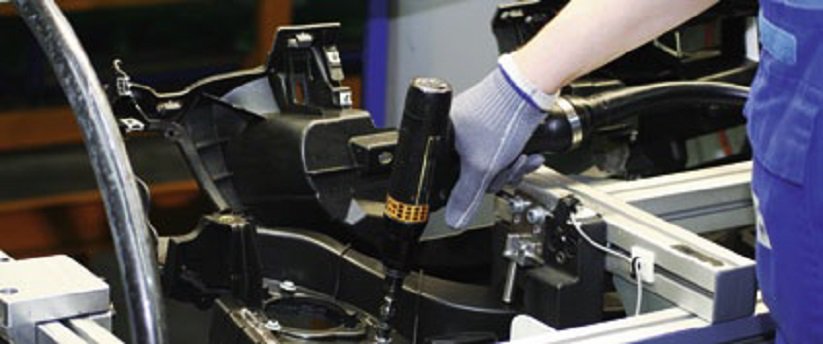The "leaner" assembly
If you don't just "optimize" your assembly processes, but turn them completely upside down to really achieve the best workplace organization and process design - yes, you can really save time and money. Atlas Copco Tools has recently established a new department that supports, advises and trains users in precisely this area.

N iels Rabbe is the globally responsible Business Manager for Simultaneous Engineering and Process Optimization (SEPO) at Atlas Copco Tools. He and his colleagues advise customers holistically on the design and optimization of assembly processes. Those who implement the tips avoid
Screw cases hold many opportunities
errors, reduces its costs and improves the quality of its products. "In screw assembly, we deal with a wide variety of materials, tools and screw connections on a daily basis," says Rabbe. "We look at our customers' bolting cases holistically on the component and advise on both the design of bolting cases and the selection of the right tightening strategies and their impact on the assembly process. " The SEPO team at Atlas Copco Tools analyzes a user's situation and works with him to develop options for optimizing processes.
Niels Rabbe cites SMP Deutschland GmbH in Neustadt as an example: "The automotive supplier had problems with high error rates in the assembly of carrier frames for loudspeakers. We were able to demonstrate simple approaches that brought the rework rates to zero." The potential savings are obvious. But often the requests or approaches to solutions are much more complex. "In cases where a customer would have to make very high investments in modern technologies, for example when converting its production from pneumatic screwdrivers to controlled systems with data documentation and integration into an assembly concept, we are often talking about six-figure investment sums ", emphasises Rabbe. "In these cases, we create the basis for a well-founded amortization calculation, show influencing variables and potential savings. This allows the customer to weigh up whether a change in production is economical."
Complete restructuring
In many discussions and cases, however, Niels Rabbe and his colleagues have found that although processes can be made more efficient, for example with a better tool, there is often still room for improvement: "In many cases, economically viable optimization can only be achieved when we are allowed to question everything and completely reorganize production in the sense of "lean production"," says Rabbe. "Then we can give our customers a real leap forward. »
Atlas Copco Tools has therefore expanded its portfolio in this direction. In the summer of 2012, a "Production Transformation" department was founded, which always takes the overall process into account in its advice. "From now on, we can advise and train our customers on the subject of lean production. For this purpose, we have set up a special Lean Training Center, where we intensively discuss the approach and benefits in three-day training sessions," explains the SEPO manager. In this way, we want to convey and facilitate the holistic and sustainable improvement of their production processes according to the rules of the lean methodology for customers, regardless of the "individual topic" of bolting.
Because Atlas Copco doesn't just manufacture tools and assembly systems. "We actually always think in terms of processes, in terms of company key figures, in terms of lean methods," Rabbe emphasizes. His team cooperates with one of Europe's most experienced lean experts, Kevin Garvey. The owner and managing director of InGenius Lean has spent 20 years optimizing processes for Toyota and Volkswagen worldwide.
Reduce Monday times - save costs
The consulting and training always includes practical simulation, in which, for example, a typical industrial assembly situation is reorganized by the lean transformation to a progressively leaner ("leaner") assembly, which brings directly measurable improvements.
Lean is a methodology for improving processes that has evolved over decades. "For our customers, the focus is on increasing productivity and quality as well as reducing costs," emphasizes Niels Rabbe. "Assembly planners or plant managers can themselves witness, for example, the reduction of assembly time by 40 percent with a simultaneous increase in production volume by 50 percent and vividly see how accumulations of intermediate products - and thus costs - disappear. »
In several steps, the workplace is reorganized and production is adapted to the actual needs of the customer: The first step is assembly with a typical workbench and manufacturing in batch sizes. Subsequently, everything is reduced to "the£essentials", the provision of assembly parts as a ready-delivered kit is introduced and then the batch size is gradually reduced to one. At the same time, a demand-driven production quantity is introduced. At each step, the most important data are identified and compared so that the benefits can be clearly demonstrated.
In addition to teaching the most important Lean vocabulary, the course also explains process parameters (such as takting), aids to process control (such as visualization), and general organizational aids (such as the need to create clear work instructions in a structured manner).









